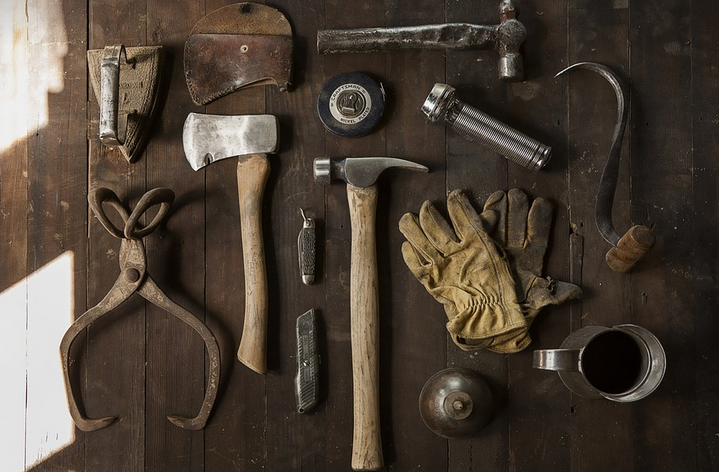
Caulking Your Rv Roof: A Comprehensive Guide For 2025
Why Caulking is Crucial for Your RV’s Health
Your RV roof, that sturdy shield against the elements, is a vital part of your travels. But just like any other structure, it requires love and care to keep it in tip-top shape. One crucial aspect of maintaining your RV roof is regular caulking—a process often overlooked but undeniably essential for keeping your home on wheels dry, leak-free, and ready for adventures.
The Importance of Caulking: A Breakdown
Caulking acts as a barrier between the layers of your RV’s roof, preventing water, moisture, and other external elements from seeping in. It forms a resilient seal that protects against everything from driving rain to heavy snow and accidental spills from inside. Over time, however, caulking can degrade, especially with weather exposure and age.
Think of it like building an underwater bunker; you need sturdy walls and waterproof seals to keep the water out! Caulking is your “secret sauce,” providing a seamless and durable defense against the elements. This prevents leaks that can lead to mold growth, structural damage, and even costly repairs down the road.
The Process: A Step-by-Step Guide
Before we delve into the steps, let’s acknowledge that caulking your RV roof is a project best carried out by someone with some DIY experience. However, don’t be intimidated! With careful planning and attention to detail, you can achieve a flawless seal.
Step 1: Gather Your Tools and Supplies
To begin, gather the following essentials:
- Caulking gun
- Silicone caulk (choose a sealant specifically for RV roofs)
- Rubber spatula or caulking tool
- Cleaning cloths
- High-pressure water hose
- Painter’s tape
- Drop cloth (optional)
Step 2: Prepare Your RV Roof
Before you even think about caulking, ensure your roof is clean and dry. The goal is to create a smooth surface for the caulk to adhere to. Use a brush or sponge with warm water and mild dish soap to scrub away dirt, debris, and any accumulated grime on your RV’s roof.
Once your roof is clean, allow it to air-dry completely before proceeding with the caulking process. This will ensure that the caulk adheres properly without trapping moisture or air pockets.
Step 3: Apply the Caulking
Caulking should be done in stages, working from one end of the roof to the other. Begin by applying a thin bead of caulk along the seams of your RV’s roof. Don’t try to apply thick layers or rush this step. A thin layer is ideal for a smooth, seamless seal.
Always use a caulking gun with a steady and controlled pressure release. This will help you achieve an even caulk line without any air pockets or bumps. If you feel like your caulk application needs more detail, try using the rubber spatula to smooth out the lines for a more professional finish.
Ensure that the caulk is applied evenly and without gaps, covering the entire joint area thoroughly. This will create a strong seal against water and moisture infiltration. Be warned: if you use too much caulk, your RV’s roof might become heavier, which could affect its structural integrity.
Step 4: Drying Time
After applying the caulk, allow it to cure for the recommended time specified by the manufacturer. This process usually takes anywhere from a few hours to a full day, depending on the type of caulk and ambient temperatures.
While waiting, use your high-pressure hose to gently wash away any excess caulk that may have seeped out during the application process.
Expert Tips for RV Roof Caulking
To keep your RV roof looking its best and prevent unexpected leaks, follow these expert tips:
- **Choose the Right Caulk:** Opt for a high-quality silicone caulk designed specifically for RV roofs. These waterproof sealants are formulated to withstand extreme temperature changes and harsh weather conditions.
- **Cleanliness is Key:** Before applying caulk, thoroughly clean your RV roof with soap and water to remove any dirt, debris, or build-up that could impede the application process.
- **Apply in Thin Layers:** Begin by applying a thin layer of caulk, ensuring smooth edges without creating air pockets. Overdoing it can lead to unsightly bulges on your roof’s exterior.
- **Use a Rubber Spatula for Precision:** If you encounter uneven surfaces or need extra detail, consider using a rubber spatula for precise caulking along the seam areas of your RV’s roof.
- **Allow Sufficient Drying Time:** Follow the manufacturer’s instructions for drying time. This can vary based on types of caulk and temperature.
Beyond Caulking: RV Roof Maintenance Tips
Remember, maintaining your RV roof goes beyond simply caulking. Regularly inspecting your RV’s roof is crucial to catching any potential leaks or damage early on.
Here are a few additional maintenance tips for your RV’s roof:
- **Monthly Roof Inspection:** Take some time each month to visually inspect your roof from top to bottom. Check for cracks, loose shingles, or any visible signs of water damage.
- **Regular Cleaning:** Avoid excessive dirt and debris buildup by cleaning the roof periodically using a soft-bristled brush and mild soap solution.
- **Weather Protection:** Invest in a breathable cover for your RV when it’s not being used, especially during harsh weather conditions.
- **Professional Inspection:** Consider a professional roof inspection every few years to ensure optimal maintenance and address any underlying issues before they worsen.
Conclusion: A Well-Caulked Roof for Happy Travels
Caring for your RV’s roof is an investment in your travel freedom and peace of mind. Caulking your RV roof is a small yet critical step to extend the life of your camper, ensuring countless future adventures. By following these easy steps and expert tips, you can keep your RV protected from the elements and enjoy worry-free travels for years to come!